一.Classification of LED displays
| Classification | Variety | illustrate |
|
Usage environment |
Indoor LED display |
Indoor LED displays are used in indoor environments. This type of display has moderate brightness, large viewing angle, short color mixing distance, light weight and high density, making it suitable for viewing at a closer distance. |
|
Outdoor LED display |
Outdoor LED displays are used in outdoor environments. This type of display has high brightness, long color mixing distance, high protection level, strong waterproof and UV resistance, and is suitable for long-distance viewing. | |
|
Display color |
Single primary color LED display | The single-color LED display screen is composed of LED lights of one color and can only display a single color, such as red, green, orange, etc. |
|
Dual color LED display |
The dual-color LED display is composed of red and green LED lights. The dual-color display with 256 levels of gray can display 65,536 colors (the dual-color screen can display 3 colors: red, green, and yellow). | |
| Full color LED display | The full-color LED display is composed of red, green and blue LED lights and can display white balance and 16,777,216 colors. | |
|
Display function |
Graphic LED display (asynchronous screen) | The graphic LED display can display text, graphics, pictures and other information content. Can be displayed online and offline. |
| Video LED display (synchronous screen) | The video LED display can display various types of information in real time and synchronously, such as two-dimensional or three-dimensional animation, video, TV, DVD, live broadcast and other video information content. |
二.Basic composition of LED display screen
1、Asynchronous screen:
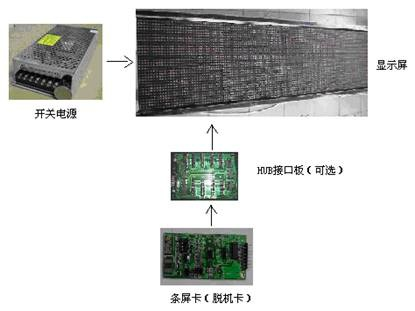
It is usually composed of display unit board (module), bar screen card, switching power supply, and HUB board (optional). Connect to the computer through the serial port cable to change the displayed text, and then you can work without the computer.
2、Sync screen:
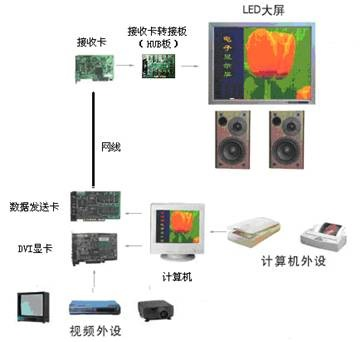 The synchronous screen system is relatively complex and can be large or small. It usually consists of a computer, DVI graphics card, data sending card, synchronous data receiving card, HUB board, network cable, LED display, etc. The system always needs to be connected to the computer to display the images and text on the computer on the large LED screen.
The synchronous screen system is relatively complex and can be large or small. It usually consists of a computer, DVI graphics card, data sending card, synchronous data receiving card, HUB board, network cable, LED display, etc. The system always needs to be connected to the computer to display the images and text on the computer on the large LED screen.
三.Noun concepts involved in LED display screen
1. Pixel:
It is the smallest imaging unit of LED display screen. Commonly known as “points” or “pixels”.

As shown in the picture above, one display pixel is composed of 2 red and 2 green.
2. Display module:
It is composed of several display pixels, which are structurally independent and constitute the smallest unit of the LED display screen.
· The indoor screen uses an 8×8 display module, that is, each display module has 64 pixels
Outdoor screens use a single lamp bead, usually 1-3 lamp beads of the same or inconsistent colors constitute one pixel of the module.


As shown in the picture on the right above, the outdoor screen module consists of 2 red lamp beads forming one display pixel.
3. Display module:
An independent unit that constitutes an LED display screen is determined by the circuit and installation structure and has a display function. To put it simply, in order to facilitate assembly and display, the semi-finished products shipped from the factory are usually provided in the form of display modules. Multiple display modules and display drivers are made together. Indoor screens are commonly known as “unit boards”; outdoor screens are commonly known as “modules”, and several modules plus chassis, fans, power supplies, etc. are put together to form a “box”, which is mostly used for large full-color screens.
- Indoor screen unit boards usually have 64×32 (64 columns and 32 rows, composed of 32 modules), 64×16 (64 columns, 16 rows, composed of 16 modules) etc. The picture below is a 64×16 unit board:


Front of indoor screen unit board Back of indoor screen unit board
- Outdoor screen modules usually include 64×32, 32×32, 32×16, 16×16, and 16×8

The picture above shows a 16×8 (2 red) outdoor screen module. It has a waterproof structure for full outdoor use. We can see the plastic shell. On the far right is a plan view of its entire structure: the lamp beads are plugged into the display board, and the display driver circuit is on the back panel. This is a split structure. , and some have an overall structure in which the display panel and display driving circuit are placed on one circuit board.
We can see the difference in the two figures below. The panel and back shell are actually a plastic cover. There are holes on the panel corresponding to the positions of the lamp beads so that the lamp beads can leak out. The back shell has screw holes or magnetic posts for installation, making the module easy to assemble. The front of the module is filled with waterproof glue dedicated to the display.
4. LED display screen body:
The unit boards/modules/boxes are spliced together in a certain way, and the control card/control system, power supply and frame are added to form an LED display.
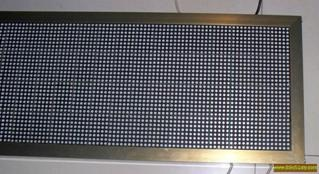

Indoor screen: display unit board + control card + power supply + aluminum frame

Outdoor screen: display module + control card + power supply + aluminum frame

Full color screen: display box + operating system + computer + communication network + frame, etc.
5. Point distance:
It is the distance between 2 pixels. What matters is the distance of the viewer. Usually the concept of point pitch is used for outdoor screens, including P6, P7.62, P8, P10, P12, P16, P20, etc., in millimeters.
The viewing distance of outdoor screens is usually within 30 meters, and modules no larger than P16 (16mm) are used.
The denser the dot pitch, the more delicate the displayed characters and strokes, the more pixels per unit area, and the more expensive the display cost.
6. Scanning method:
Usually there is another issue with the scanning method regarding outdoor screen modules.
The scanning method determines the form of connection between modules. The scanning methods include 1/16, 1/8, 1/4, 1/2, and static.
Since the LED display is refreshed line by line, the scanning method also determines the display refresh method. For example, 1/16 means one line is refreshed each time, and 16 lines is a scanning cycle, which requires four signals of ABCD; 1/8 is One row is refreshed each time, and 8 rows are a scan cycle, which requires three signals of ABC; the others are analogized in sequence.
If the same LED light is used, the brightness of 1/16 scan is lower than that of 1/8, and the brightness of static (1/1) is the highest. Indoor screens usually use 1/16 scan, and outdoor and semi-outdoor screens usually use 1/16 or 1/8. For environments where the screen is often exposed to strong sunlight, it is best to use 1/4 scan.
| scanning method | Trace description | Illustration |
| 1/16 (one sixteenth) scan | 16.0: Straight line, with 16 lines of data along the way. |  |
|
1/8 (one-eighth) scan |
8.0: Straight line, with 8 lines of data along the way. | 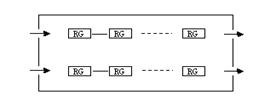 |
| 8.1: Go up and down, with 16 rows of data along the way and 8 rows folded. |  |
|
| 8.2: Snake down, with 16 rows of data along the way and 8 rows folded. |  |
|
|
1/4 (quarter) scan |
4.0: Straight line, with 4 lines of data along the way. | 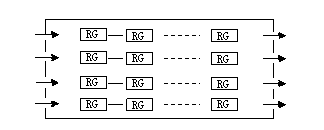 |
| 4.1: Go up and down, with 16 rows of data along the way and 8 rows folded. | 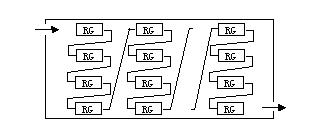 |
|
| 4.2: Snake down, with 16 rows of data along the way and 8 rows folded. | 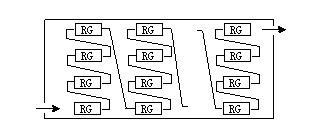 |
|
| 4.3: Go up and down, with 8 rows of data along the way, and the 8 rows are folded. | 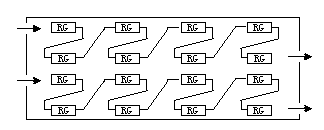 |
|
| 4.4: Snake down, with 8 rows of data along the way, and the 8 rows are folded. | 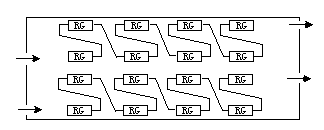 |




